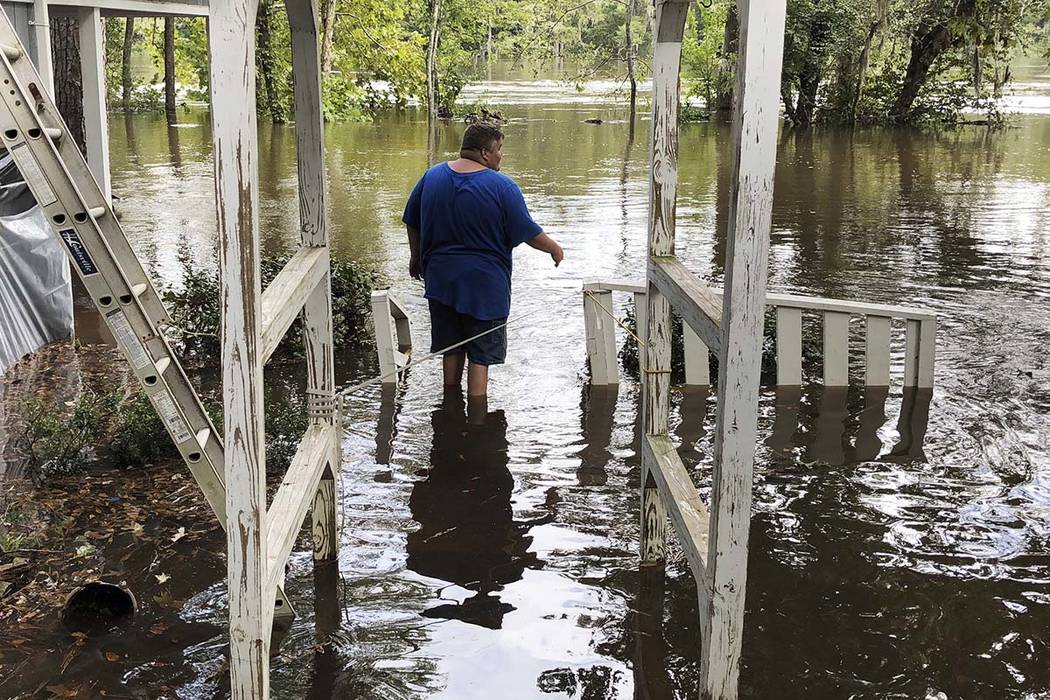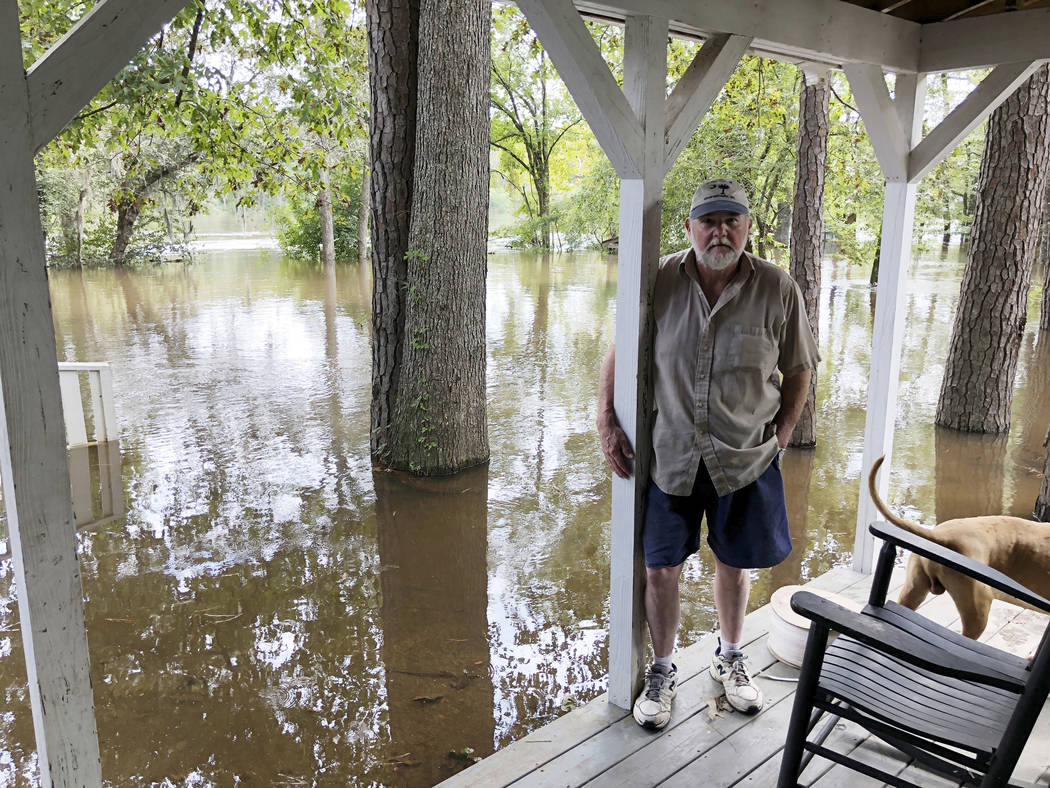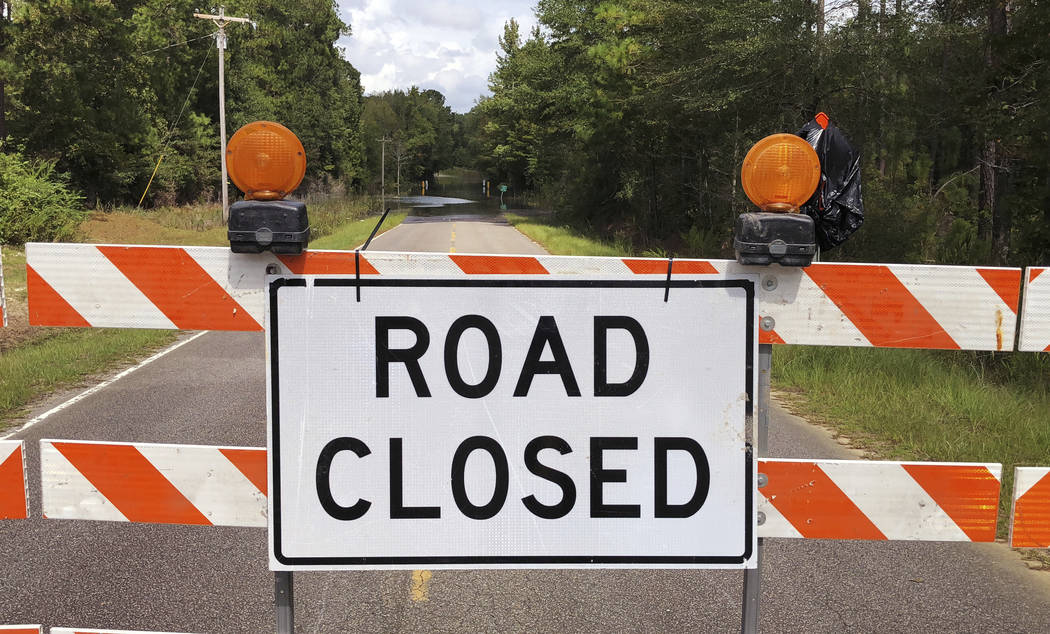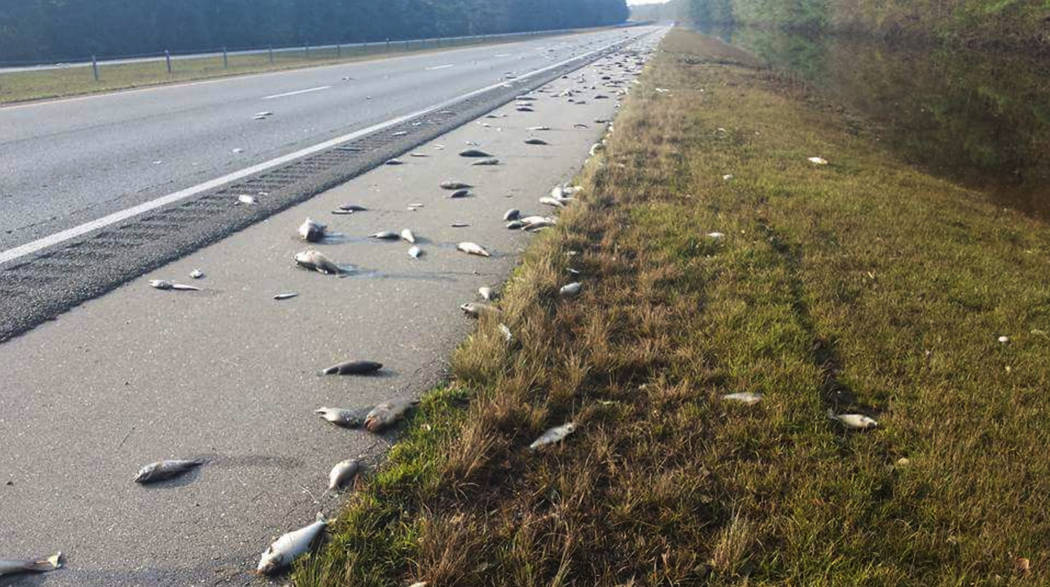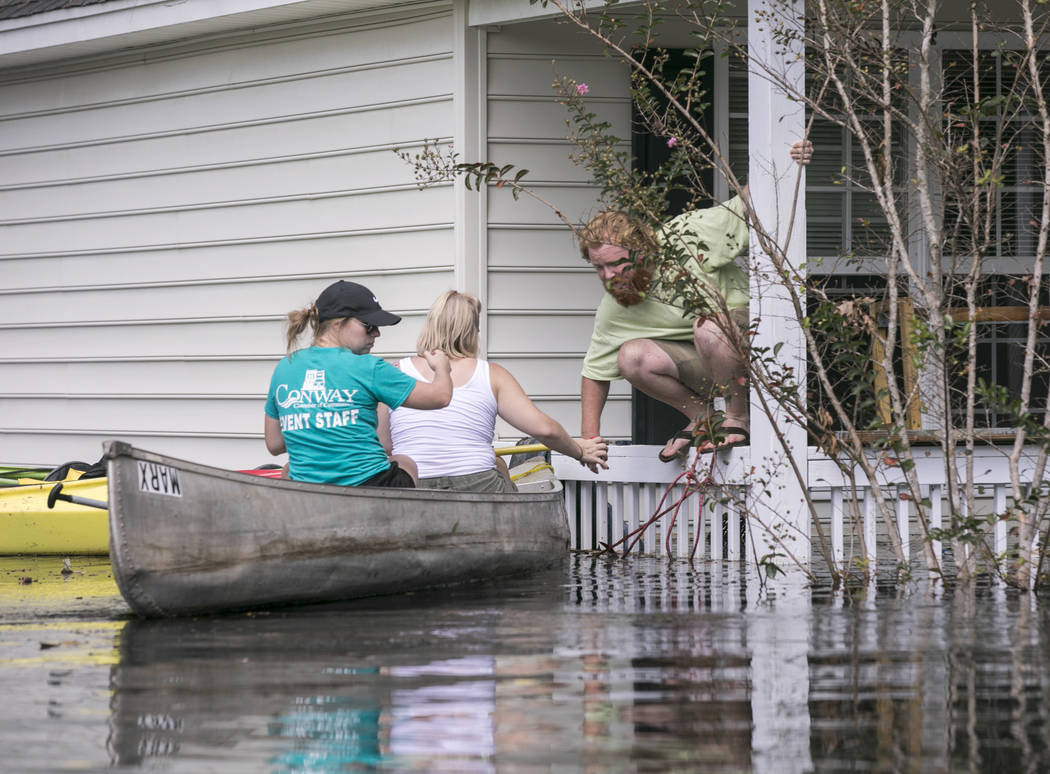10 days after landfall, Florence’s floods just hitting some people
YAUHANNAH, S.C. — More than a week ago, pastor Willie Lowrimore and some of his congregants stacked sandbags around their South Carolina church to protect it from the fury of Hurricane Florence.
They moved the pews to higher ground and watched anxiously for days as the nearly black, reeking water from the swollen Waccamaw River rose, even though the hurricane was long gone. Finally, before dawn Monday, the water seeped around and over the sandbags, flooding the sanctuary.
“I’m going to go one day at a time,” Lowrimore said as he sat in a rocking chair listening to the river rush by, ruining the church he built almost 20 years ago. “Put it in the Lord’s hands. My hands aren’t big enough.”
Ten days after Florence came ashore, the storm caused fresh chaos Monday in Yauhannah and elsewhere across South Carolina, where rivers kept rising and thousands more people were told to be ready to evacuate.
Authorities urged up to 8,000 people in Georgetown County, on the South Carolina coast, to be prepared to flee from potential flood zones. A “record event” of up to 10 feet of flooding was expected to begin Tuesday near parts of the Pee Dee and Waccamaw rivers, county spokeswoman Jackie Broach-Akers said.
Places along the waterfront in Georgetown were predicted to flood for the first time since record keeping began before the American Revolution.
“We are still getting phone calls from people who don’t know what is going on,” said Georgetown County Emergency Management Director Sam Hodge.
In North Carolina, where Florence made landfall, Gov. Roy Cooper said the state was moving from an emergency response mode to full-time recovery from the storm.
“Florence is gone, but the storm’s devastation is still with us,” Cooper said at a news conference.
Elsewhere:
In Washington, lawmakers considered almost $1.7 billion in new money for disaster relief and recovery, even as they face a deadline this week to fund the government before the Oct. 1 start of the new budget year.
The chairman of the House Appropriations Committee said the money would be available as grants to states to help rebuild housing and public works and to assist businesses. GOP Rep. Rodney Frelinghuysen of New Jersey called it “a first round” and said lawmakers were ready to act quickly if the federal disaster relief agency also needs more money.
The economic research firm Moody’s Analytics estimated that Florence has caused around $44 billion in damage and lost output, which would make it one of the 10 costliest U.S. hurricanes. The worst disaster, Hurricane Katrina in 2005, cost $192.2 billion in today’s dollars. Last year’s Hurricane Harvey cost $133.5 billion.
———
Authorities have recovered a van they say was swept away last week in South Carolina floodwaters, killing two mental patients being transported in the back.
Horry County Sheriff Phillip Thompson says in a news release that the van was recovered Monday from a river in Marion County.
Thompson has opened an internal investigation into the incident, which happened while two of his deputies were transporting two female mental patients as floodwaters in northeastern South Carolina rose after Hurricane Florence.
———
The two interstates in southeastern North Carolina closed by Hurricane Florence’s floodwaters have reopened in a period spanning less than 24 hours.
Gov. Roy Cooper announced Monday that Interstate 40 is now clear all the way to Wilmington. Interstate 95 reopened late Sunday.
The state Department of Transportation had warned last week that it could be this coming weekend or longer before both major interstates would be clear again. But DOT Secretary Jim Trogdon says the waters receded much more quickly than they anticipated and road damage was either not as grave or repaired quickly.
Trogdon says 400 roads statewide are still closed and nearly 1,900 road sites will require work in the coming weeks and months.
Cooper says power outages have fallen from a peak of 800,000 customers to 5,000. There are still 2,200 people in shelters, and the state has contacted over 4,700 displaced residents to see if they need hotel rooms for the near future.
———
North Carolina legislators say they’re working on a disaster relief bill that will address extended public school closures and teacher pay issues resulting from Hurricane Florence.
Republican state education leaders announced Monday in Wilmington that they’re planning legislation designed to ensure teachers at still-shuttered schools that they will get paid without using vacation time.
Sen. Michael Lee of Wilmington, Rep. Craig Horn of Weddington and state Superintendent Mark Johnson also discussed adjusting the school calendar law to address lost classroom time because of closures.



